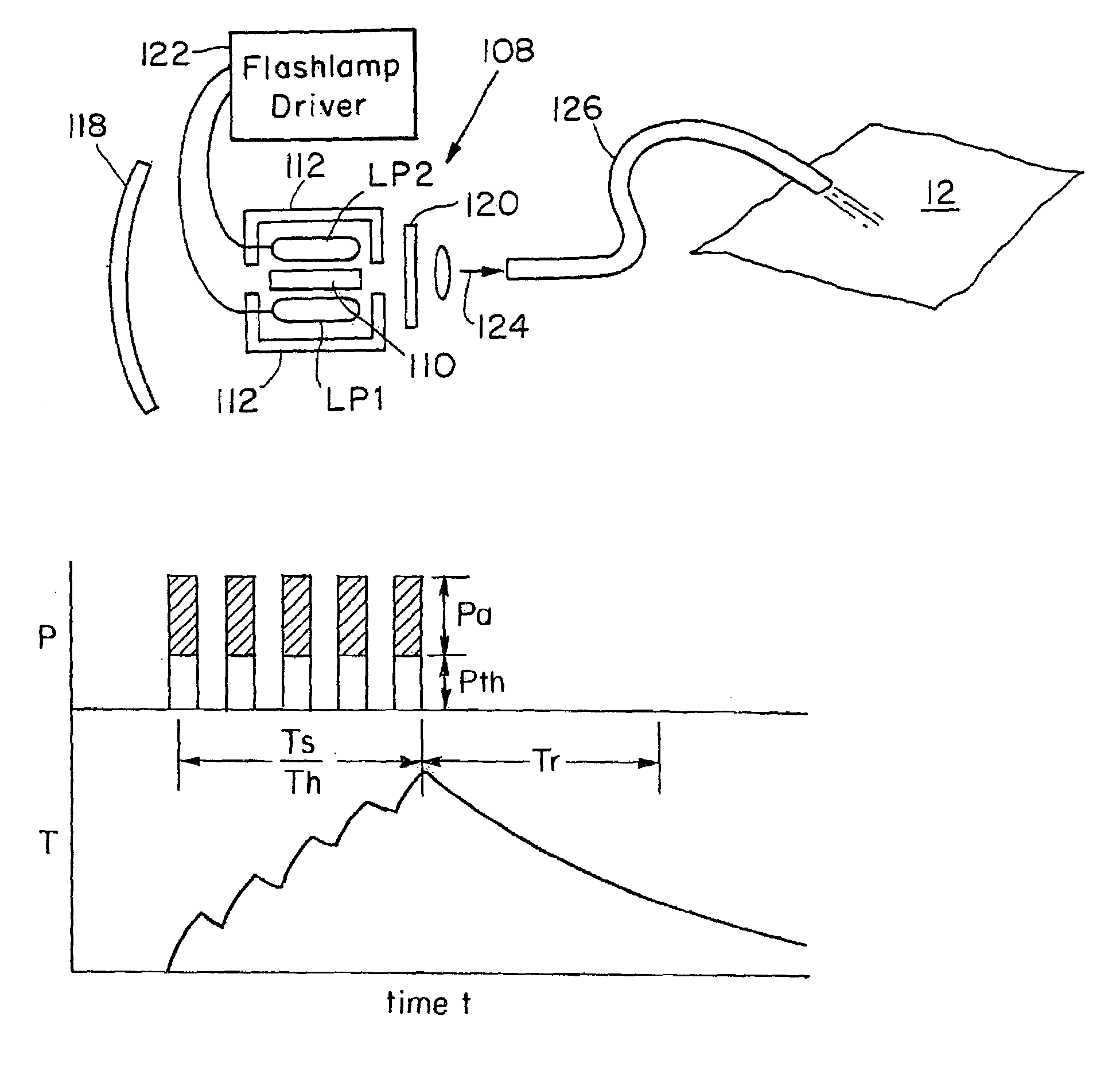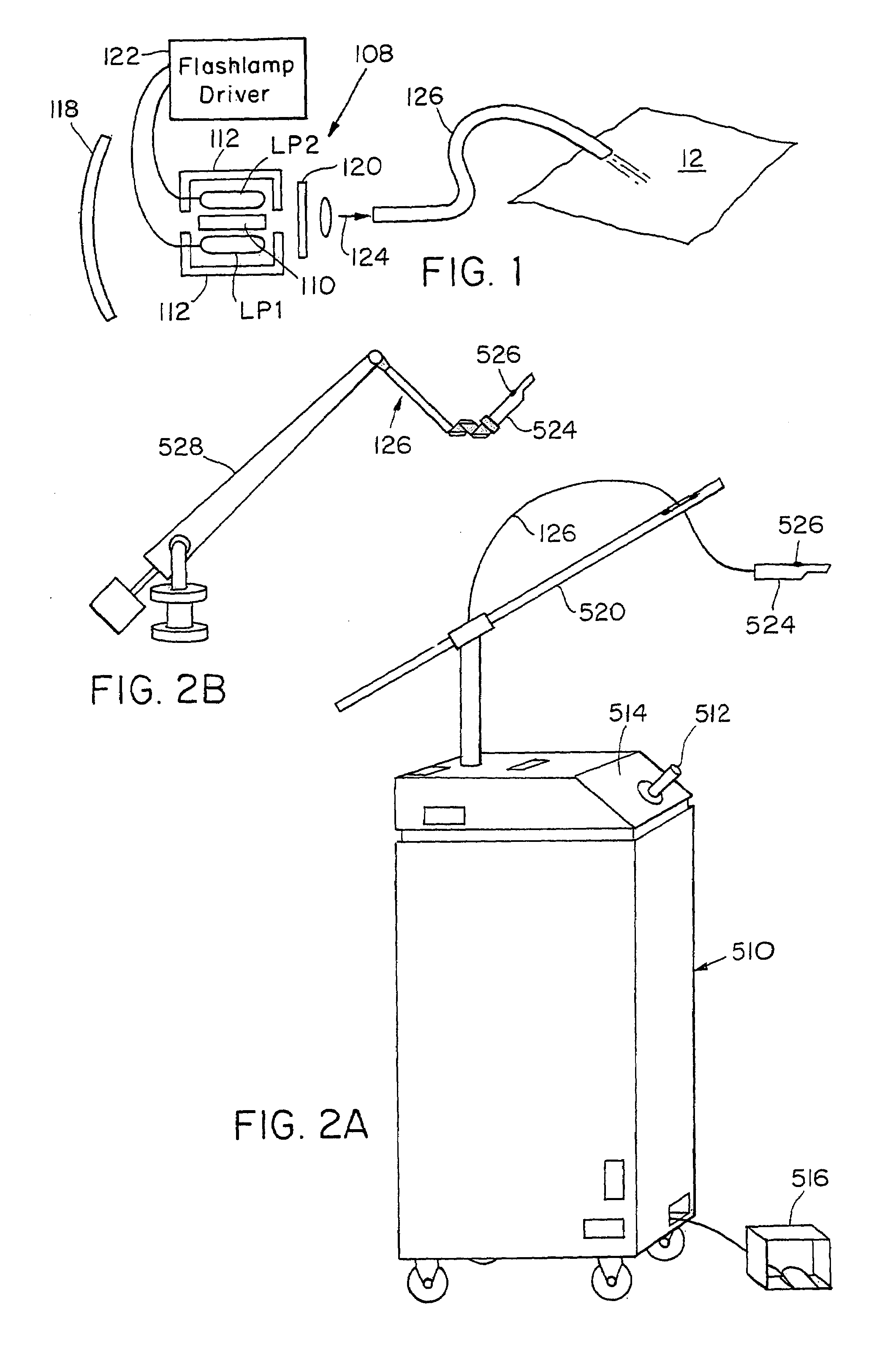Laser system and method for treatment of biologic targets
a laser system and target technology, applied in the field of laser system and method for treating biologic targets, can solve the problem of desensitizing the laser to this lens, and achieve the effect of less temperament and easy operation
- Summary
- Abstract
- Description
- Claims
- Application Information
AI Technical Summary
Benefits of technology
Problems solved by technology
Method used
Image
Examples
Embodiment Construction
[0028]FIG. 1 shows an alexandrite laser system, which has been constructed according to the principles of the present invention. An alexandrite laser 108 generally comprises one or more flashlamps LP1 and LP2 that are disposed around a usually centrally located alexandrite crystal gain medium 110. The flashlamps LP1, LP2 irradiate the gain medium either directly or via the associated reflectors 112. The flashlamps LP1,LP2 are driven by a flashlamp driver 122.
[0029]The use of the alexandrite laser is preferred to other laser systems for a number of reasons. Pulsed dye lasers operating in the 577–585 nm range are well absorbed by the deoxy-hemoglobin (Hb) and oxy-hemoglobin (HbO2) relative to the melanin. This provides good selectivity. The problem, however, is that the total absorption of the melanin is very high. As a result, the laser light does not penetrate very deeply into the dermal layer. To effectively reach some dermal structures, the light must penetrate deeply, up to 5 mil...
PUM
 Login to View More
Login to View More Abstract
Description
Claims
Application Information
 Login to View More
Login to View More - R&D
- Intellectual Property
- Life Sciences
- Materials
- Tech Scout
- Unparalleled Data Quality
- Higher Quality Content
- 60% Fewer Hallucinations
Browse by: Latest US Patents, China's latest patents, Technical Efficacy Thesaurus, Application Domain, Technology Topic, Popular Technical Reports.
© 2025 PatSnap. All rights reserved.Legal|Privacy policy|Modern Slavery Act Transparency Statement|Sitemap|About US| Contact US: help@patsnap.com



